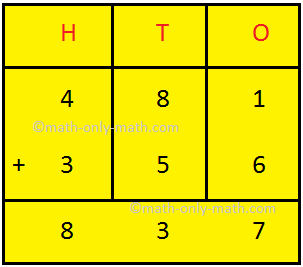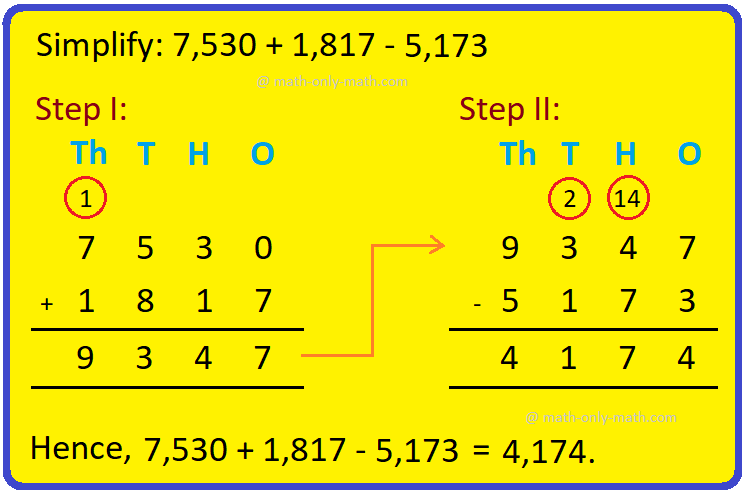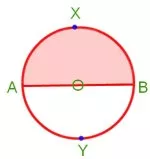Subscribe to our YouTube channel for the latest videos, updates, and tips.
Home | About Us | Contact Us | Privacy | Math Blog
Arithmetic Progression
An arithmetic progression is a sequence of numbers in which the consecutive terms (beginning with the second term) are formed by adding a constant quantity with the preceding term.
Definition of Arithmetic Progression: A sequence of numbers is known as an arithmetic progression (A.P.) if the difference of the term and the preceding term is always same or constant.
The constant quantity stated in the above definition is called the common difference of the progression. The constant difference, generally denoted by d is called common difference.
an+1 - an = constant (=d) for all n∈ N
From the definition, it is clear that an arithmetic progression is a sequence of numbers in which the difference between any two consecutive terms is constant.
Examples on Arithmetic Progression:
1. -2, 1, 4, 7, 10 ……………. is an A.P. whose first term is -2 and common difference is 1 - (-2) = 1 + 2 = 3.
2. The sequence {3, 7, 11, 15, 19, 23, 27, …………………} is an Arithmetic Progression whose common difference is 4, since
Second term (7) = First term (3) + 4
Third term (11) = Second term (7) + 4
Fourth term (15) = Third term (11) + 4
Fifth term (19) = Fourth term (15) + 4 etc.
3. The sequence {58, 43, 28, 13, -2, -17, -32, …………………} is an Arithmetic Progression whose common difference is -15, since
Second term (43) = First term (58) + (-15)
Third term (28) = Second term (43) + (-15)
Fourth term (13) = Third term (28) + (-15)
Fifth term (-2) = Fourth term (13) + (-15) etc.
4. The sequence {11, 23, 35, 47, 59, 71, 83, …………………} is an Arithmetic Progression whose common difference is 4, since
Second term (23) = First term (11) + 12
Third term (35) = Second term (23) + 12
Fourth term (47) = Third term (35) + 12
Fifth term (59) = Fourth term (47) + 12 etc.
Algorithm to determine whether a sequence is an Arithmetic Progression or not when its nth term is given:
Step I: Obtain an
Step II: Replace n by n + 1 in an to get an+1.
Step III: calculate an+1 - an.
When an+1 is independent of n then, the given sequence is an Arithmetic Progression. And, when an+1 is not independent of n then, the given sequence is not an Arithmetic Progression.
The following examples illustrate the above concept:
1. Show that the sequence < an> defined by an = 2n + 3 is an Arithmetic Progression. Also fine the common difference.
Solution:
The given sequence an = 2n + 3
Replacing n by (n + 1), we get
an+1 = 2(n + 1) + 3
an+1 = 2n + 2 + 3
an+1 = 2n + 5
Now, an+1 - an = (2n + 5) - (2n + 3) = 2n + 5 - 2n - 3 = 2
Hence, an+1 - an is independent of n, which is equal to 2.
Therefore, the given sequence an = 2n + 3 is an Arithmetic Progression with common difference 2.
2. Show that the sequence < an> defined by an = 3n2 + 2 is not an Arithmetic Progression.
Solution:
The given sequence an = 3n2 + 2
Replacing n by (n + 1), we get
an+1 = 3(n + 1)2 + 2
an+1 = 3(n2 + 2n + 1) + 2
an+1 = 3n2 + 6n + 3 + 2
an+1 = 3n2 + 6n + 5
Now, an+1 - an = (3n2 + 6n + 5) - (3n2 + 2) = 3n2 + 6n + 5 - 3n2 - 2 = 6n + 3
Therefore, an+1 - an is not independent of n.
Hence an+1 - an is not constant.
Thus, the given sequence an = 3n2 + 2 is not an Arithmetic Progression.
Note: To obtain the common difference of a given arithmetic progression we required to subtract its any term from that which follow it. That is,
Common Difference = Any term - Its preceding term.
● Arithmetic Progression
- Definition of Arithmetic Progression
- General Form of an Arithmetic Progress
- Arithmetic Mean
- Sum of the First n Terms of an Arithmetic Progression
- Sum of the Cubes of First n Natural Numbers
- Sum of First n Natural Numbers
- Sum of the Squares of First n Natural Numbers
- Properties of Arithmetic Progression
- Selection of Terms in an Arithmetic Progression
- Arithmetic Progression Formulae
- Problems on Arithmetic Progression
- Problems on Sum of 'n' Terms of Arithmetic Progression
From Definition of Arithmetic Progression to HOME PAGE
Didn't find what you were looking for? Or want to know more information about Math Only Math. Use this Google Search to find what you need.
Recent Articles
-
5th Grade Circle Worksheet | Free Worksheet with Answer |Practice Math
Jul 11, 25 02:14 PM
In 5th Grade Circle Worksheet you will get different types of questions on parts of a circle, relation between radius and diameter, interior of a circle, exterior of a circle and construction of circl… -
Construction of a Circle | Working Rules | Step-by-step Explanation |
Jul 09, 25 01:29 AM
Construction of a Circle when the length of its Radius is given. Working Rules | Step I: Open the compass such that its pointer be put on initial point (i.e. O) of ruler / scale and the pencil-end be… -
Combination of Addition and Subtraction | Mixed Addition & Subtraction
Jul 08, 25 02:32 PM
We will discuss here about the combination of addition and subtraction. The rules which can be used to solve the sums involving addition (+) and subtraction (-) together are: I: First add -
Addition & Subtraction Together |Combination of addition & subtraction
Jul 08, 25 02:23 PM
We will solve the different types of problems involving addition and subtraction together. To show the problem involving both addition and subtraction, we first group all the numbers with ‘+’ and… -
5th Grade Circle | Radius, Interior and Exterior of a Circle|Worksheet
Jul 08, 25 09:55 AM
A circle is the set of all those point in a plane whose distance from a fixed point remains constant. The fixed point is called the centre of the circle and the constant distance is known






New! Comments
Have your say about what you just read! Leave me a comment in the box below. Ask a Question or Answer a Question.